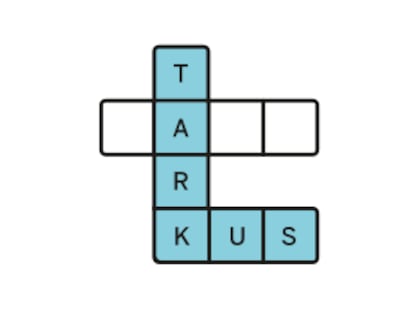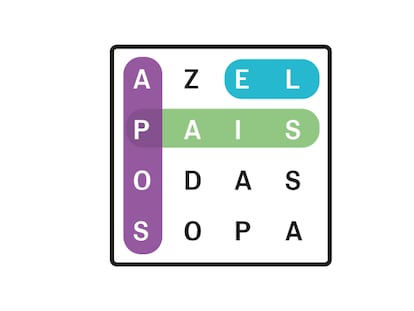Bonobos communicate using a universal principle of human languages
The ability to put together meaningful ‘words’ to form a ‘sentence’ with a new meaning was thought to be unique to humans

Although their respective lineages diverged millions of years ago, bonobos and humans share 98.7% of their genome (the same as chimpanzees). Bonobos — which are endangered, with fewer than 20,000 remaining in the protected forests of the Democratic Republic of the Congo — are known for their remarkable ability to communicate, even with humans. Now, research published in Science shows that they combine their vocalizations in a way that mirrors how humans put words together to form sentences, enabling them to communicate more complex messages. This ability was once thought to be unique to humans.
All human languages adhere to a principle that linguists call compositionality. Postulated in the 19th century by the German mathematician and philosopher Gottlob Frege, its simplest version resembles a mathematical formula: the meaning of a combination is the sum of the meanings of its parts. To explain compositionality, the authors of the study provide a very simple example: the word “biology,” which is made up of two equally significant morphemes, bio (life) and logy (science).
Francisco J. Salguero, professor of general linguistics at the University of Seville in Spain, gives a more complete explanation: “What [this principle] says is that the meaning of a complex linguistic expression is a function of the meanings of the simple expressions that comprise it, and of the rules used to combine those simple expressions to construct the complex one.” This principle is adhered to all human languages that have been studied.
“We wanted to see if bonobos also have this ability,” says Mélissa Berthet, lead author of the Science paper, who studies animal communication at the Department of Evolutionary Anthropology at the University of Zurich in Switzerland.
To do so, the researchers first needed to understand the meaning of bonobos’ individual vocalizations. Berthet spent months with three groups at the Kokolopori Bonobo Reserve, one of the last sanctuaries for these primates. “There, I followed the bonobos for 12 to 15 hours a day, observing their behavior and vocalizations,” says the primatologist. The reserve has three communities of bonobos that are used to humans, meaning scientists can study them without interfering with their behavior.
“As I followed them, I used a microphone to record their vocalizations and systematically document the context in which each vocalization occurred,” Berthet explains. For each one, she consulted a list of more than 300 parameters to comprehensively describe the context. “For example, I noted whether there was a neighboring group nearby, whether food was present, whether the caller was eating, resting, or grooming, and what happened immediately after the vocalization…”
By analyzing correlations between a call’s output and context, she was able to identify patterns. “If a particular vocalization was always followed by the entire group moving, it probably indicates that this call means ‘let’s travel,‘” she explains. Using this approach, they were able to uncover the meaning of several thousand vocalizations. Now the researchers had to determine if the bonobos combined the vocalizations and if the combinations had their own meaning.
“Specifically, we tested several criteria of compositionality, examining whether the combination of two vocalizations produced one with a meaning that could be understood from the meanings of the individual calls,” explains the primatologist.
In previous work, the researchers had identified up to 11 types of individual vocalizations (grunts, low or high-pitched hooting, something resembling a whistle, screams, etc.). In this study, they found and analyzed 38 combinations of two of these individual calls. (They also recorded more complex ones with three, four, or more elements, which they will describe in future research.) After analyzing the combinations, the scientists verified that they complied with the simple version of the principle of compositionality.
But there is a more complex dimension to this principle. In the simple version, there is a sum of meanings, as in the case of the word biology. But there is also “nontrivial compositionality” where, as Salguera, the linguistic professor, explains: “One of the elements modifies the other, it completes the other.”
He offers an example that ties into another dimension of language: discrete infinity, where a finite set of units (morphemes or words) can generate an infinite number of combinations. “Once I have an expression like ‘I want water,’ I can keep building: ‘I want cold water,’ ‘I want cold water in a glass,’ ‘I want cold water in a clear glass,’ ‘I want cold water in a clean, clear glass...’” Bonobos, too, would seem to meet this criterion.

“We ruled out uncommon calls and combinations, so we conducted our study with seven types of calls and 19 combinations. Among them, four were compositional, one trivial, and three nontrivial,” Berthet writes in an email.
This may seem like a small number (although combinations of more than two vocalizations remain to be studied), but this is the first time that a species other than humans has fully complied with the principle of compositionality. For instance, the combination of a howl, which, depending on the context, signals a call for union, paired with a high-pitched hoot, which typically means “pay attention to me,” results in a call to coordinate and move. Another example is the combination of whistles and peeps, which frequently occur in contexts of social intimacy, such as during copulation.
For Professor Salguero, who was not involved in the study, “if this is truly present in bonobos, even at this very basic level of two meaningful signals, where one depends on the other, it would explain how it is possible that, after such a long evolutionary period leading to our species, sign systems have been developing this characteristic and becoming increasingly complex.”
Professor Simon W. Townsend, an animal communication expert from the University of Zurich, is a senior author of the Science study. Regarding its implications beyond bonobos, he says: “The fact that we find evidence of compositionality in humans, chimpanzees, and now bonobos suggests that our last common ancestor, who lived around seven million years ago, also had basic compositional skills, and therefore this core feature of language began to evolve long before language itself emerged.”
In just two months, the most prestigious science journals have published studies on whales that follow essential laws of human language, and on how the brain processes of budgerigars when vocalizing are strikingly similar to those of humans.
Ivan G. Torre, a researcher who trained in animal communication systems and now works for Oracle developing communication systems for machines, recalls that at the end of the 19th and beginning of the 20th centuries, when modern linguistic theories were born, they were shaped by “an anthropocentric bias, reserving language exclusively for humans.”
But there is growing data that contradicts this view. For Torre, the key lies in the need for communication, regardless of the form or species. He recalls a study he co-authored, published in 2020, which focused on linguistic laws. The study found that in interactions between plants and insects, the system obeyed Zipf’s law, which posits that the most common elements (words in the case of human communication) tend to be shorter than the less common ones. In this case, they observed that the most common molecular chains in plant-animal interactions are also those formed by fewer atoms.
Ramón Ferrer i Cancho, director of the Quantitative, Mathematical, and Computational Linguistics Laboratory at the Polytechnic University of Catalonia, compares the evolution of language to the history of tool use, which was once considered uniquely human.
“Later, we learned that chimpanzees used tools, that dolphins hunted worms under the sand with a stick... We now know the same thing about language, that it’s not exclusive to humans,” says Ferrer i Cancho, one of the leading experts in human linguistics and animal communication.
Regarding the question of compositionality, he recalls a classic study in ethology published at the beginning of the century: the calls of white-nosed monkeys. These monkeys produce two distinct alert calls: pyows warn of a leopard, and hacks signal danger from the sky in the form of an eagle. “The researchers found that the monkeys also produce a third call, pyow-hack, and observed that it triggers group movement,” he recalls.
The best is yet to come. Barthet recorded over 3,600 vocalizations across 400 hours of observation, many of which consist of more than two vocalizations. We will have to wait and see what the bonobos are communicating in their combinations of three, four, five, or more sounds that, until now, have seemed like mere howls.
Sign up for our weekly newsletter to get more English-language news coverage from EL PAÍS USA Edition
Tu suscripción se está usando en otro dispositivo
¿Quieres añadir otro usuario a tu suscripción?
Si continúas leyendo en este dispositivo, no se podrá leer en el otro.
FlechaTu suscripción se está usando en otro dispositivo y solo puedes acceder a EL PAÍS desde un dispositivo a la vez.
Si quieres compartir tu cuenta, cambia tu suscripción a la modalidad Premium, así podrás añadir otro usuario. Cada uno accederá con su propia cuenta de email, lo que os permitirá personalizar vuestra experiencia en EL PAÍS.
¿Tienes una suscripción de empresa? Accede aquí para contratar más cuentas.
En el caso de no saber quién está usando tu cuenta, te recomendamos cambiar tu contraseña aquí.
Si decides continuar compartiendo tu cuenta, este mensaje se mostrará en tu dispositivo y en el de la otra persona que está usando tu cuenta de forma indefinida, afectando a tu experiencia de lectura. Puedes consultar aquí los términos y condiciones de la suscripción digital.
More information
Archived In
Últimas noticias
NASA discovers Titan doesn’t have an ocean, but a ‘slushy ice layer’ that increases possibility of life
Innocence lost in the forest of the child soldiers: ‘Each leader of the armed group had his girls’
‘Fallout’ or how the world’s largest company turned an anti-capitalist apocalyptic Western into a phenomenon
From inflation to defending migrants: Eileen Higgins and Zohran Mamdani inaugurate the new Democratic resistance against Trump
Most viewed
- ‘El Limones’ and the growing union disguise of Mexican organized crime
- Christian Louboutin: ‘Young people don’t want to be like their parents. And if their parents wear sneakers, they’re going to look for something else’
- The low-cost creative revolution: How technology is making art accessible to everyone
- A mountaineer, accused of manslaughter for the death of his partner during a climb: He silenced his phone and refused a helicopter rescue
- Liset Menéndez de la Prida, neuroscientist: ‘It’s not normal to constantly seek pleasure; it’s important to be bored, to be calm’










































